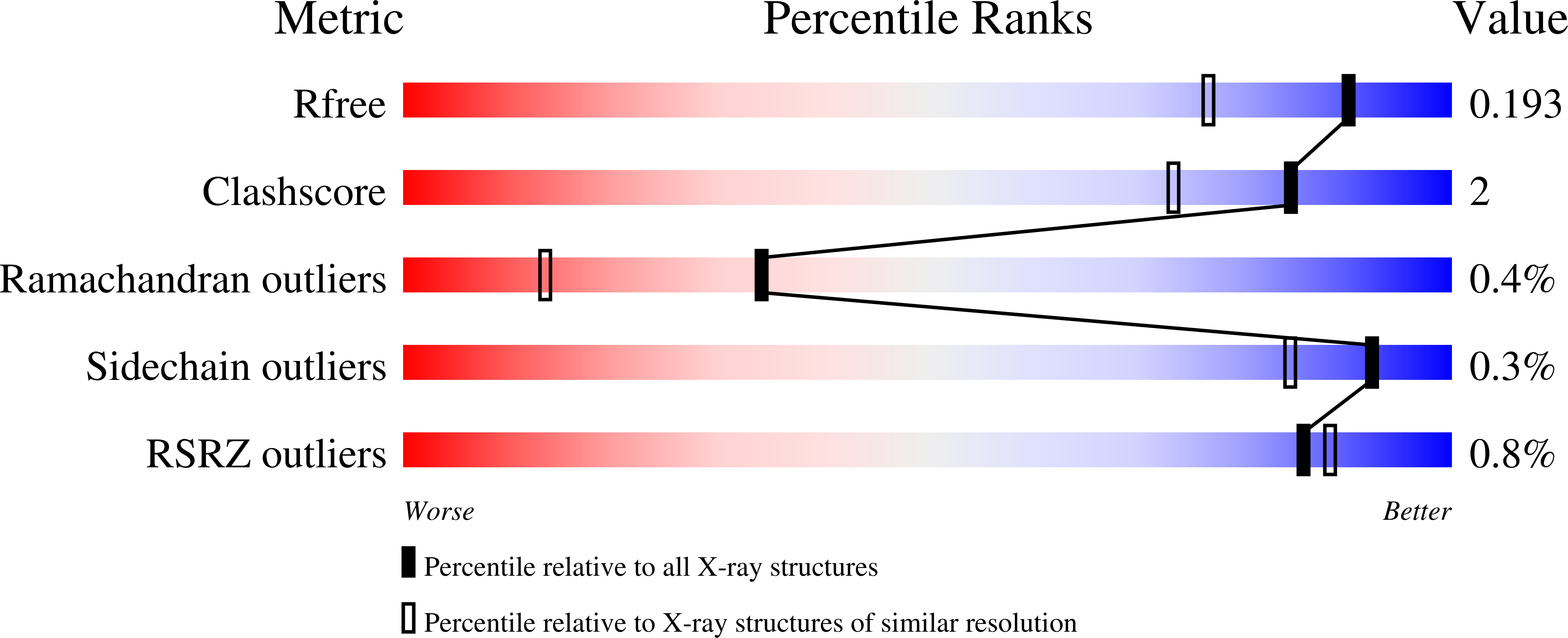Structural insights into the interactions of glutathione transferases with a nitric oxide carrier and sodium nitroprusside.
Schwartz, M., Perrot, T., Beurton, J., Zannini, F., Morel-Rouhier, M., Gelhaye, E., Neiers, F., Schaniel, D., Favier, F., Jacquot, J.P., Leroy, P., Clarot, I., Boudier, A., Didierjean, C.(2023) Biochem Biophys Res Commun 649: 79-86
- PubMed: 36758482
- DOI: https://doi.org/10.1016/j.bbrc.2023.01.099
- Primary Citation of Related Structures:
8AWZ, 8AX0, 8AX1, 8AX2 - PubMed Abstract:
Glutathione transferases are detoxification enzymes with multifaceted roles, including a role in the metabolism and scavenging of nitric oxide (NO) compounds in cells. Here, we explored the ability of Trametes versicolor glutathione transferases (GSTs) from the Omega class (TvGSTOs) to bind metal-nitrosyl compounds. TvGSTOs have been studied previously for their ligandin role and are interesting models to study protein‒ligand interactions. First, we determined the X-ray structure of the TvGSTO3S isoform bound to the dinitrosyl glutathionyl iron complex (DNGIC), a physiological compound involved in the storage of nitric oxide. Our results suggested a different binding mode compared to the one previously described in human GST Pi 1 (GSTP1). Then, we investigated the manner in which TvGSTO3S binds three nonphysiological metal-nitrosyl compounds with different metal cores (iron, ruthenium and osmium). We assayed sodium nitroprusside, a well-studied vasodilator used in cases of hypertensive crises or heart failure. Our results showed that the tested GST can bind metal-nitrosyls at two distinct binding sites. Thermal shift analysis with six isoforms of TvGSTOs identified TvGSTO6S as the best interactant. Using the Griess method, TvGSTO6S was found to improve the release of nitric oxide from sodium nitroprusside in vitro, whereas the effects of human GST alpha 1 (GSTA1) and GSTP1 were moderate. Our results open new structural perspectives for understanding the interactions of glutathione transferases with metal-nitrosyl compounds associated with the biochemical mechanisms of NO uptake/release in biological systems.
Organizational Affiliation:
Université de Lorraine, CNRS, CRM2, F-54000, Nancy, France; CSGA, INRAE, University of Burgundy, CNRS, Institut Agro, F-21000, Dijon, France. Electronic address: [email protected].





















